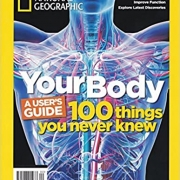In Content Marketing, Are Listicles Part of the Problem or a Solution?
What reunites you with your car keys, slashes your dessert budget, transports you to Margaritaville, and douses the flames shooting out of your head, all while making you nicer? Well, as Amy Maclin asserts in Oprah Daily, it’s mediation.
As a content marketing trainer at Say It For You, I couldn’t help both admiring – and critiquing – “9 Surprising Benefits of Mediation”. Turning your frown upside down? Providing TLC for your IBS? Soothing Your Achy-Breaky Back? All titles to induce a smile. Good, cleverly written explanations, too.
(“Reunites you with your car keys” alludes to the fact that meditation improves cognition, according to a study of older adults; “Transporting you to Margaritaville “refers to the fact that mediation turns on the body’s parasympathetic nervous system – the flip side of fight or flight.)
“There are good reasons listicles remain one of the most popular forms of content today,” Hubspot points out. They’re readable, and, precisely because they’re bite-sized, they’re sharable. What’s more, nobullmarketing says, list posts are shared more often than posts in other formats. Still, given the quality of some list posts, there’s a chance they might be considered lightweight, the authors caution.
Travel writer Eric Reed does consider listicles lightweight. “If there is one thing we can certainly agree on above all else” he says, ” it is that listicles constitute the lowest form of journalism.” When you write a listicle, he points out, you’re not providing a transition from one thought to the next. Difficult subjects need a unified narrative, and listicles lack the background readers need before they can really get into your story.
At Say It For You, where we create content based on a combination of independent research and interviews with our business and practice owner clients, their staff members, and their customers, we view content marketing as SME-DEV (Subject Matter Expert Development). While listicles certainly have a place in our content marketing “toolbox”, we prefer to utilize the “Power of One”, focusing each blog post on one new idea, or calling for a single action.
Focused on one thing, a post has greater impact, since people are bombarded with so many different messages each day. Ms. Maclin, what I’d love to read is one long, detailed article, focused on the research concerning the many cognitive health benefits of meditation. The title might even be “Meditation Can Reunite You With Your Car Keys”.






Follow us online!